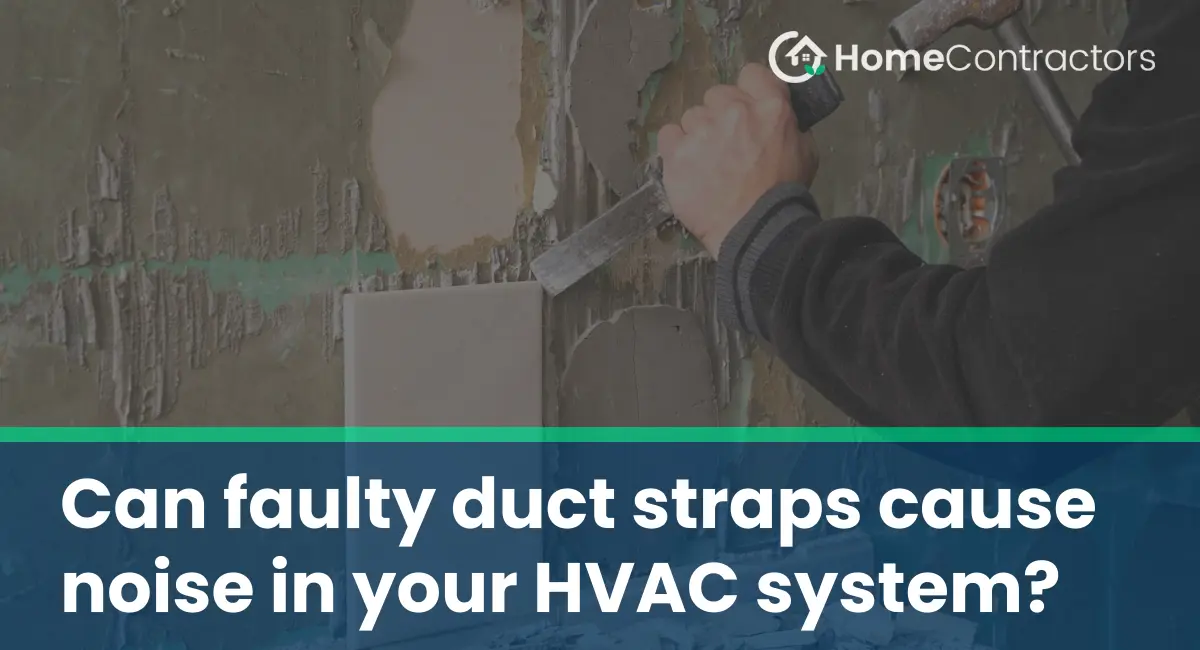Your HVAC (heating, ventilation, and air conditioning) system is responsible for maintaining a comfortable indoor environment. However, issues with your system can arise, such as strange noises. One possible culprit for these noises is faulty duct straps. In this article, we will explore the role of duct straps, how they can become faulty, and how they may contribute to noise in your HVAC system.
Understanding Duct Straps
Duct straps are essential components of your HVAC system. They secure the ductwork in place, preventing it from sagging or separating. These straps are made of various materials, such as metal or nylon, and are typically installed at regular intervals along the length of the ductwork. By holding the ducts firmly, duct straps ensure efficient airflow and help maintain the integrity of the system.
Causes of Faulty Duct Straps
Over time, duct straps can deteriorate due to various factors, causing them to become faulty. Some common causes include:
- Normal wear and tear: Continuous exposure to temperature changes, moisture, and vibration can weaken the duct straps, especially if they are made of materials prone to degradation, such as nylon.
- Age: Older duct straps may become more susceptible to wear and tear, potentially leading to failure and noise in the HVAC system.
- Improper installation: If duct straps are not installed correctly or are not designed for the specific weight and size of the ductwork, they may fail prematurely, causing noise issues.
Contributions to HVAC System Noise
When duct straps become faulty, they can lead to noise problems within your HVAC system. Here are some ways in which faulty duct straps can contribute to these noises:
- Vibration: When the duct straps lose their ability to hold the ductwork securely, it can result in vibration. This vibration can generate rattling or humming noises in the system, which can be quite noticeable.
- Duct movement: Faulty duct straps may fail to provide sufficient support to the ductwork, causing it to move or sag. This movement creates friction between the ducts and the surrounding structural components, resulting in squeaking or creaking sounds.
- Loose connections: If the duct straps are not tightly secure, the connections between different sections of the ductwork can become loose. As a result, air leakage may occur, leading to whistling or hissing noises.
- Enhanced sound transmission: Faulty duct straps can also impact the sound insulation of your HVAC system. When the ducts are not adequately secured, sound waves produced by the system can easily transfer through the ductwork, amplifying the noise and making it more noticeable in your living space.
Resolution and Prevention
To address noise issues caused by faulty duct straps, it is important to have a professional HVAC technician inspect and repair the system. The technician will examine the integrity of the duct straps and replace any faulty ones. Additionally, implementing preventative measures can help mitigate future noise problems:
- Regular maintenance: Schedule routine HVAC maintenance, including inspections of the duct straps, to identify and address any developing issues before they escalate into significant problems.
- Use quality materials: During installation or replacement, make sure to use high-quality duct straps that are appropriate for the weight and size of your ductwork. This will help ensure their longevity and reduce the chances of premature failure.
- Proper installation: Hire experienced professionals to install duct straps correctly. This will involve securing them at regular intervals, ensuring proper tension, and avoiding any sharp bends or kinks in the ductwork.
Faulty duct straps can indeed cause noise problems in your HVAC system. Due to wear and tear, age, or improper installation, these straps can fail and lead to vibration, duct movement, loose connections, and enhanced sound transmission. To resolve such issues, it is crucial to have a professional inspect and repair the system as necessary. Additionally, implementing preventative measures will help minimize the occurrence of noise problems in the future, ensuring a peaceful and comfortable indoor environment.
